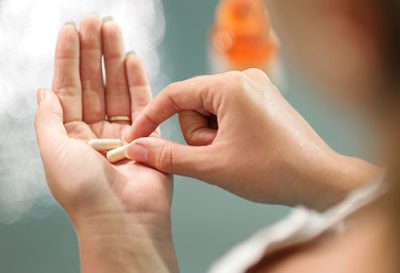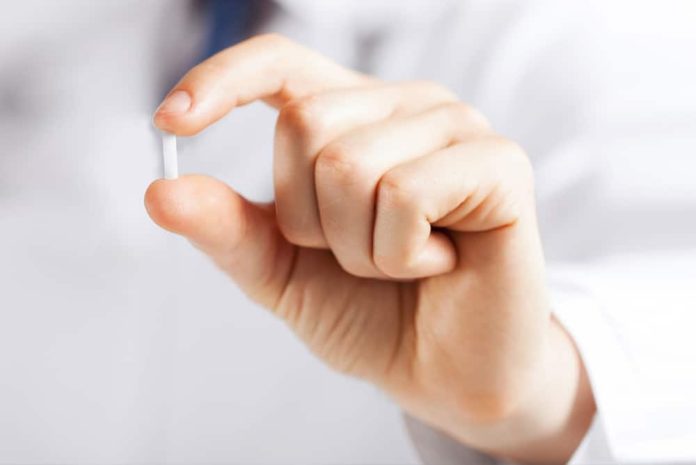Bioidentical hormone therapy (BHT) has received a lot of interest in recent years as an alternative way to address hormonal imbalances and aging symptoms. This therapy employs hormones that are chemically similar to those generated by the body.
Bioidentical hormones, as opposed to synthetic hormones used in standard hormone treatment, are meant to more precisely mirror the body’s natural hormones.
While the notion appears to be appealing, it is critical to grasp the intricacies, advantages, potential hazards, and precautions connected with bioidentical hormone treatment.
Fundamentals of Bioidentical Hormones
Bioidentical hormones are made from plant-based sources like soy and yams and are processed to mimic the chemical structure of hormones generated by the human body. This chemical resemblance is thought to enable a more natural integration inside the body’s hormonal system.
Estradiol (a kind of estrogen), progesterone, and testosterone are common bioidentical hormones. These hormones can be taken in the form of lotions, gels, tablets, patches, or injections.
The BHT approach is a step-by-step process that begins with accurate hormone testing and evaluation. Following that, a personalized treatment strategy suited to individual needs is implemented.
Regular monitoring and changes are required to provide optimal outcomes and safety. It’s a strategy best managed with the help of experienced healthcare providers specializing in hormonal health.
Advantages of Bioidentical Hormone Therapy
Here are some of the advantages of Bioidentical Hormone Therapy:
- Potential System Relief:
BHT is frequently used to treat symptoms related to hormonal imbalances, such as hot flashes, nocturnal sweats, mood swings, and exhaustion. The molecular similarity of bioidentical hormones is thought to allow for more effective alleviation of these symptoms.
- Individualized therapy:
One of the marketed advantages of BHT is its ability to provide personalized therapy. Therapists may adjust the therapy to an individual’s exact hormone levels and demands, resulting in more targeted and successful outcomes.
- Enhanced Cardiovascular Health:
Some research shows that BHT, particularly when started around the time of menopause, may have a beneficial effect on cardiovascular health. Oestrogen is thought to play a function in maintaining healthy blood vessels and lowering the risk of heart disease.
Is BHT used for both men and women?
Yes, bioidentical hormone treatment (BHT) can be used on both men and women. While it is commonly connected with treating hormonal imbalances and menopausal symptoms in women, BHT can also be used to treat hormone-related disorders in males.
For Women:
BHT is often used to treat menopausal symptoms such as hot flashes, night sweats, mood swings, vaginal dryness, and sleep problems.
During menopause, a woman’s estrogen and progesterone levels fall, resulting in these symptoms. Bioidentical hormones such as estradiol (a kind of estrogen) and progesterone can be administered to assist in restoring hormone levels and control these symptoms.
For males:
BHT is frequently used in males to treat andropause, sometimes known as “male menopause.” Low testosterone can cause tiredness, decreased muscular mass, diminished libido, and mood problems.
Bioidentical testosterone treatment aims to bring testosterone levels back into balance, potentially reducing symptoms and increasing overall quality of life.
Bioidentical Hormone Therapy (BHT) Procedure
Bioidentical hormone therapy (BHT) is a medical treatment that aims to restore hormonal balance in those who have imbalances or deficits in certain hormones. This therapy employs hormones that are structurally comparable to those generated by the human body.
Even though BHT shows promise in treating a range of hormonal problems, comprehension of the procedure is crucial before contemplating this course of treatment.
- Hormone Analysis and Evaluation:
Detailed screening and evaluation of an individual’s hormone levels is usually the first step in the procedure.
This includes blood testing and maybe other diagnostic tools to precisely quantify hormone levels. The healthcare professional will assess the individual’s symptoms, medical history, and particular concerns to decide if BHT is viable.
- Individualised Treatment Plan:
Based on the results of the evaluation, a healthcare professional, often a specialized physician or hormone specialist, will develop an individualized treatment plan. This strategy may include the use of particular hormones to alleviate shortages or imbalances.
The hormones used, their quantities, and the manner of administration (such as creams, gels, tablets, patches, or injections) will be adjusted to the needs of the person.
- Hormone Synthesis:
Typically, bioidentical hormones are synthesized from natural plant-based sources such as soy or yams.
These natural sources contain chemicals that can be converted into hormones with molecular structures identical to those generated by the body. Compounding pharmacies may be engaged in creating the patient’s precise dose and format.
- Monitoring and Adjustments:
Regular monitoring of hormone levels is an important element of BHT. Hormone levels might change, and treatment plans may need to be adjusted to guarantee the best results while minimizing hazards.
Blood tests are routinely performed at regular intervals to monitor changes in hormone levels and make any required adjustments to the treatment plan.
- Administration and absorption:
The bioidentical hormones chosen are administered in accordance with the treatment plan. The form of delivery used impacts how the hormones are absorbed in the body.
For example, lotions and gels are applied to the skin, patches are put on the skin’s surface, and tablets and injections deliver hormones into the body in various ways.
- Consultation with Healthcare providers:
Engage in a paramount dialogue with accredited healthcare practitioners who wield expertise in the realm of hormonal health and bioidentical hormone treatment, embarking upon BHT.
They possess the capacity to dispense tailor-made guidance, unravel inquiries, and facilitate individuals in formulating informed choices predicated on their unique health profiles.

Who Should Think About BHT?
This therapy is often proffered as a panacea for hormonal disharmony, menopausal manifestations, and age-induced quandaries. Nevertheless, not every soul is a suitable contender for this curative. Prior to embarking on BHT, engage in a colloquy with your physician.
Those grappling with severe menopausal symptoms, individuals afflicted by hormone-associated maladies like polycystic ovarian syndrome (PCOS), and those beset by peculiar health tribulations that may reap rewards from hormone optimization might potentially be deemed eligible.
Conclusion
Bioidentical hormone treatment (BHT) emerges as a compelling alternative for rectifying hormonal imbalances and age-related ailments in the realm of hormonal well-being.
As fascination with this therapy soars, it becomes crucial to grasp its intricacies and potential advantages while simultaneously acknowledging the interconnected labyrinth and contemplations it entails.
















